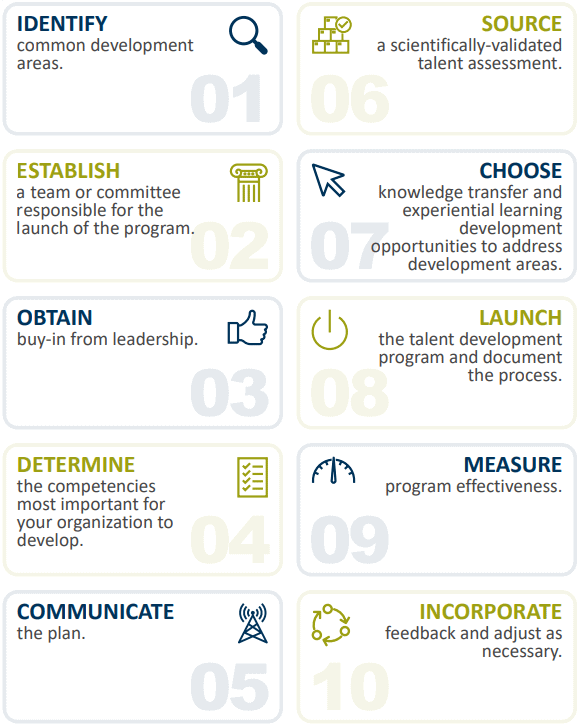How to Launch a Talent Development Program
“Train people well enough so they can leave, treat them well enough so they don’t want to.”
Richard Branson, Founder, Virgin Group
Providing employees with opportunities to learn and grow is at the heart of every talent development program. Not only do effective talent development programs increase employee satisfaction,¹ but they lead to boosted productivity,² higher levels of engagement,³ and an improved employee experience.⁴ These outcomes contribute to increased revenue⁵ and, perhaps most important of all, higher retention rates.⁶
SIGMA’s Talent Development Guide Contents
Despite the known benefits of talent development, organizations struggle to put effective talent development plans in place. Currently, 87% of workers report that they no longer feel like they are growing in their position.⁷ To address this need, SIGMA has created a talent development guide. In this guide, our experts will lead you through:
- How to identify common development areas.
- The different types of development opportunities.
- How to launch a talent development program.
- Talent development program best practices.
- How to update the plan.
- The steps required to launch a talent development program.
Download the guide and learn how you can begin building a robust talent development program for your organization.
Sneak Peek: 10 Steps to Launch a Powerful Talent Development Program
- IDENTIFY common development areas.
- ESTABLISH a team or committee responsible for the launch of the program.
- OBTAIN buy-in from leadership.
- DETERMINE the competencies most important for your organization to develop.
- COMMUNICATE the plan.
- SOURCE a scientifically-validated talent assessment.
- CHOOSE knowledge transfer and experiential learning development opportunities to address development areas.
- LAUNCH the talent development plan and document the process.
- MEASURE program effectiveness.
- INCORPORATE feedback and adjust as necessary.

Looking for More?
Would you like to learn more about SIGMA’s succession planning services?

Glen Harrison is an organizational transformation consultant and succession planning expert. Over the course of his career, Glen has worked with one-third of the Fortune 500 list and with every level of government in Canada and the United States. Having worked with numerous clients to build robust succession plans from the ground up, Glen has extensive experience in the application of SIGMA’s products and services to help organizations realize their people potential.
¹ Schmidt, Steven. (2007). The Relationship between Satisfaction with Workplace Training and
Overall Job Satisfaction. Human Resource Development Quarterly. 18. 481 – 498.
10.1002/hrdq.1216.
² On-the-Job Training Program: Increase Your Employee Productivity. Association for Talent
Development. Retrieved from https://www.td.org/professional-partner-content/on-the-jobtraining-program-increase-your-employee-productivity.
³ Developing and Sustaining Employee Engagement. Society for Human Resource Management
(SHRM). Retrieved from https://www.shrm.org/resourcesandtools/tools-andsamples/toolkits/pages/sustainingemployeeengagement.aspx.
⁴ How to Improve Employee Experience. Gallup. Retrieved from
https://www.gallup.com/workplace/323573/employee-experience-and-workplaceculture.aspx.
⁵ Markanyx Solutions. (2021). 5 Reasons Why Every Organization Needs a Learning Management
System. Edmonton Chamber of Commerce. Retrieved from
https://www.edmontonchamber.com/2021/09/24/5-reasons-why-every-organization-needs-alearning-management-system/.
⁶ Rogers, M. (2020). A Better Way to Develop and Retain Top Talent. Harvard Business Review.
Retrieved from https://hbr.org/2020/01/a-better-way-to-develop-and-retain-top-talent.
⁷ From the Great Resignation to the Great Reskilling: Insight on What’s Next for the “Great
Resigners.” Cengage Group. Retrieved from https://cengage.widen.net/s/78hrkqgfj7/cg-greatresigners-research-report-final.